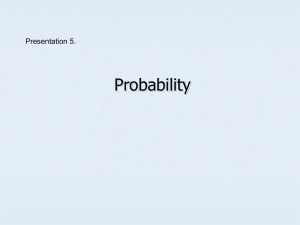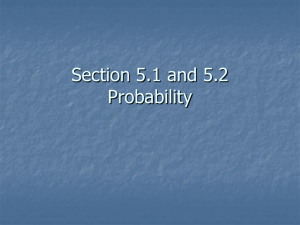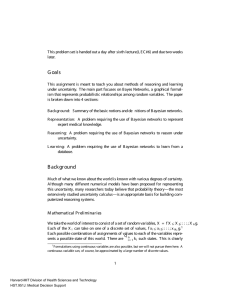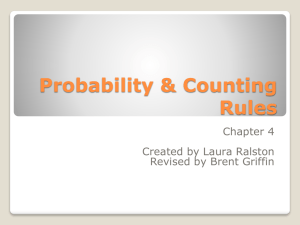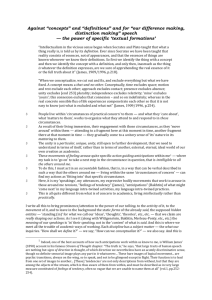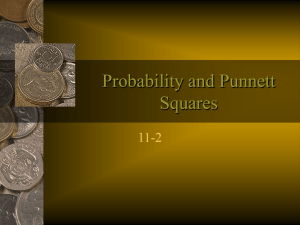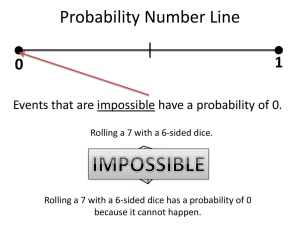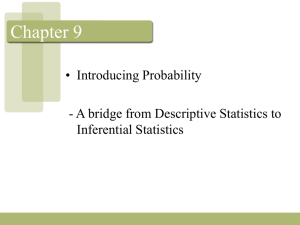Constructing a Two-Way Table “The Hypothetical Hundred Thousand”
advertisement
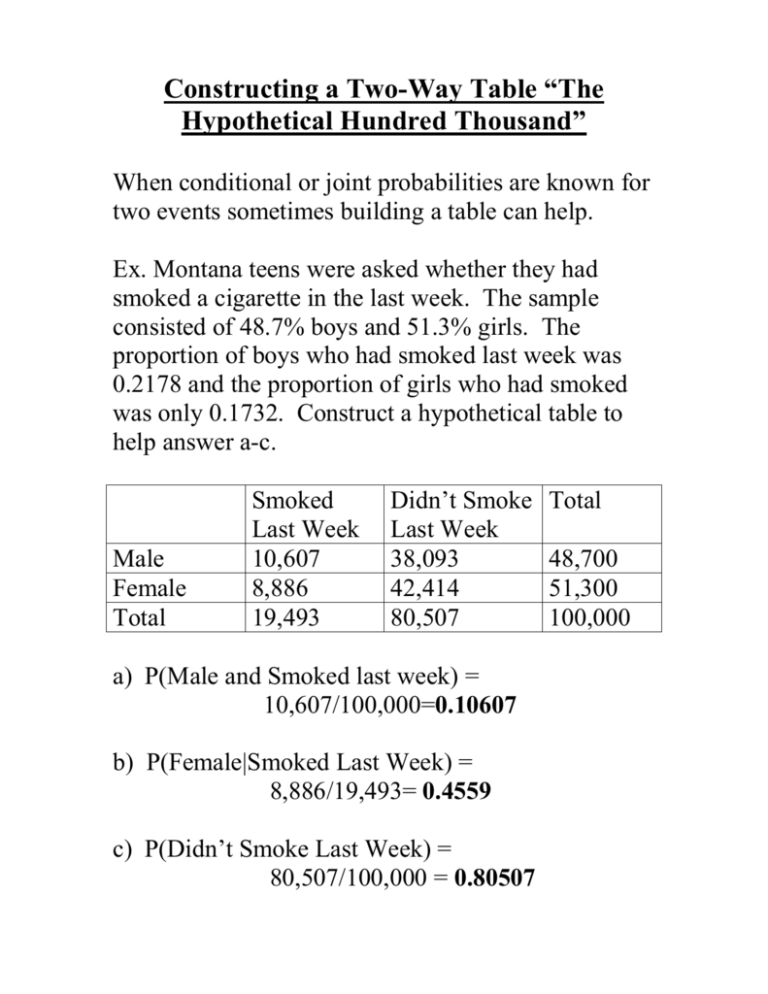
Constructing a Two-Way Table “The Hypothetical Hundred Thousand” When conditional or joint probabilities are known for two events sometimes building a table can help. Ex. Montana teens were asked whether they had smoked a cigarette in the last week. The sample consisted of 48.7% boys and 51.3% girls. The proportion of boys who had smoked last week was 0.2178 and the proportion of girls who had smoked was only 0.1732. Construct a hypothetical table to help answer a-c. Male Female Total Smoked Last Week 10,607 8,886 19,493 Didn’t Smoke Last Week 38,093 42,414 80,507 a) P(Male and Smoked last week) = 10,607/100,000=0.10607 b) P(Female|Smoked Last Week) = 8,886/19,493= 0.4559 c) P(Didn’t Smoke Last Week) = 80,507/100,000 = 0.80507 Total 48,700 51,300 100,000 5-Step Process for Finding Probabilities: 1. List each separate random circumstance involved in the problem. 2. List the possible outcomes for each random circumstance 3. Assign whatever probabilities you can with the knowledge you have. 4. Specify the event for which you want to determine the probability. 5. Determine which of the probabilities from Step 3 and which probability rules can be combined to find the probability of interest. Ex. What is the probability that while playing a new Vegas game you get a ‘3’ on one roll of a die and then get a head when you flip a coin. 1) 1st Random Circumstance: Rolling one die 2nd Random Circumstance: Flipping one coin 2) 6 possibilities for the first random circumstance (rolling one die): 1, 2, 3, 4, 5, 6. 2 possibilities for the second random circumstance (flipping one coin): Head or Tail 3) 1st Random Circumstance: P(1)=P(2)=P(3)=P(4)=P(5)=P(6)= 1/6 2nd Random Circumstance: P(H)=P(T)=(1/2) 4) Determine P(3 and Head) 5) P(3 and Head) = P(3)*P(Head)=(1/6)*(1/2)=(1/12)=0.0833 Coincidences: A surprising concurrence of events, perceived as meaningfully related, with no apparent causal connection. Law of Small Numbers: Tendency to believe that even small samples are highly representative of the populations from which they are drawn. Ex. HTHTHT is just as likely to occur as HHHTTT even though many would like to believe that HHHTTT doesn’t appear as often. Law of Large Numbers: Over time and repetition, simulations and trials will match theoretical probabilities. Ex. In the first 10 flips of a coin you may get 9 heads and one tail. The Empirical probability of getting a head then would seem to be 9/10= 0.90 However, If you flip the coin 100, 1000, or even 10,000 times it is likely that the empirical probability will level out to the expected 0.50.
